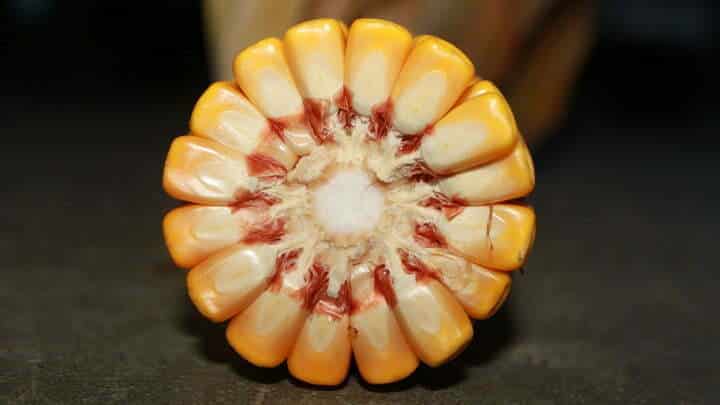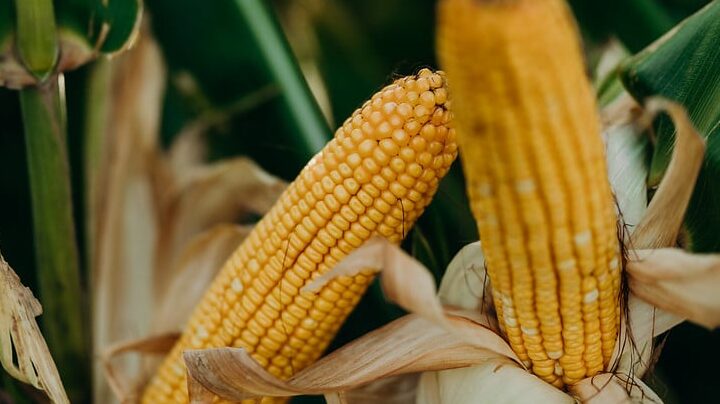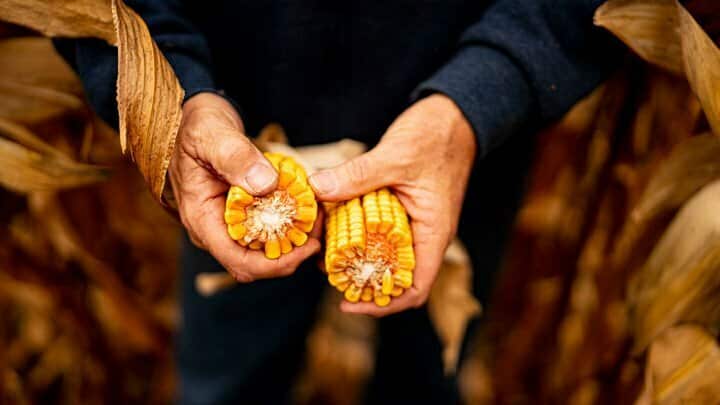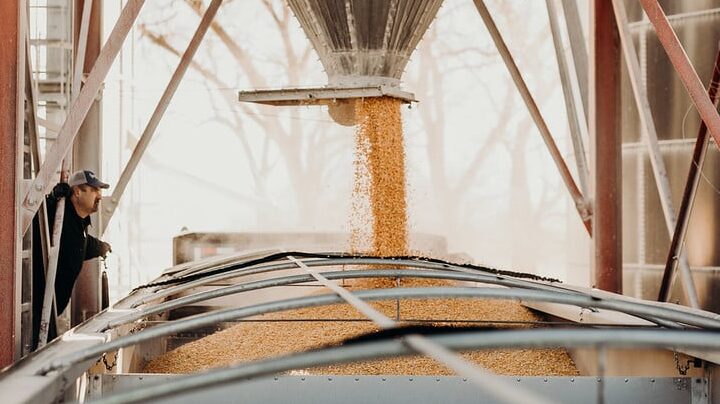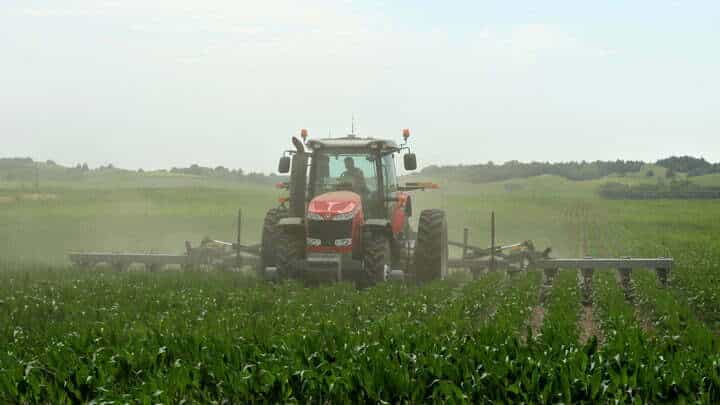Seeking New Opportunities Through Collaborative Corn Research
Research answers the “what if” questions that lead to new uses, new markets, new opportunities and new ways to grow corn even more efficiently and sustainably.
NCB research dollars are continually seeking new opportunities for corn farmers. What is the “next” ethanol? The emerging new use for corn that will again change the game for Nebraska farmers? What breakthrough will lead to significant change in the way farmers grow their crops, to use even less water, less fertilizer?
The majority of Nebraska Corn research dollars are invested in partnership with the Institute of Agriculture and Natural Resources at the University of Nebraska-Lincoln. Nebraska Corn also collaborates on research projects with fellow corn states, cooperators and other stakeholders.
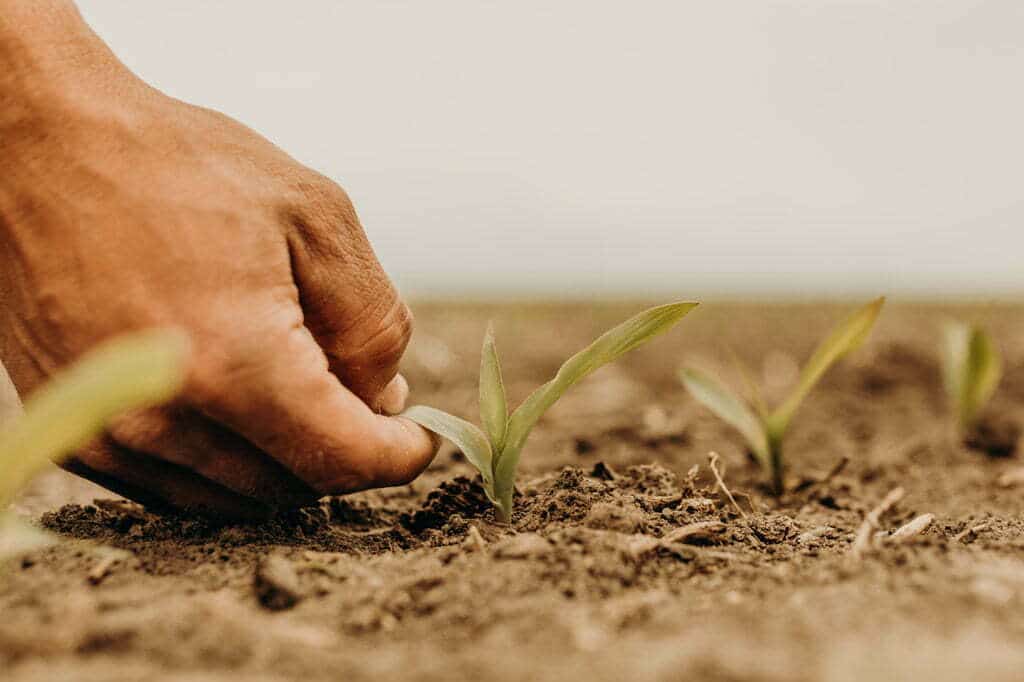
Research Priorities
Enhancing Demand & Adding Value
Nebraska’s corn farmers have the ability to grow more corn than consumers can currently utilize
as food, fuel or feed. In order to sustain the economic viability of corn farmers, it is critical that
we discover new uses and markets for Nebraska’s corn crop that meet the needs of a growing
and evolving world. NCB seeks to encourage research that will give the highest return to
Nebraska corn producers through:
- Innovative research to find new uses for corn and corn products
- Identify value-added uses of the chemicals/components of corn
- Corn focused projects that result in commercialization of corn-based products or technology
- Expanding/developing commercially significant markets for corn utilization
Ensuring Sustainability
Nebraska corn farmers are faced with the challenge of producing crops necessary to meet local,
national and international demands while maintaining the quality and quantity of resources for future generations. NCB supports research leading to regionally integrated system of plant and
animal production practices designed to produce long-term results such as:
- Sustained economic viability of corn production in Nebraska
- Improved efficiency of inputs
- Enhanced carbon sequestration and improved measurement, reporting and verification
- Minimizing threats from pests and diseases
- Improved quality of surface water and groundwater resources
- Improved soil health
- Increased resilience to changing climate conditions and weather extremes
Supporting Agriculture and STEM Education
The future of farming in Nebraska depends not only on continuing to advance research-based
technologies and production practices, but also on improving consumer appreciation of the
importance of food, fuel, and feed production to human and animal health and sustainability.
NCB seeks proposals that include education and outreach as components of the research
project. Education and outreach components might include:
- Intentional dissemination mechanisms of educational content and/or research findings to farmers
- Promoting linkages among Pre-K through 12, two-year postsecondary and higher education
programs in STEM (science, technology, engineering and math) disciplines related to food
and agricultural sciences - Teacher preparation and professional development programs
- Communicating agriculture research to non-ag audiences
To learn more about these and other NCB-funded research projects, contact Rachael Whitehair, Director of Innovation & Stewardship at rachael.whitehair@nebraska.gov.
2025 Nebraska Corn Research Report
The Nebraska Corn Board distributes an annual research report that showcases the research portfolio of Nebraska Corn in six core areas of focus: Biotechnology/Industrial Use, Livestock, Nutrient Management, Production Efficiency, Pest Management and Supporting Ag & Stem Education.

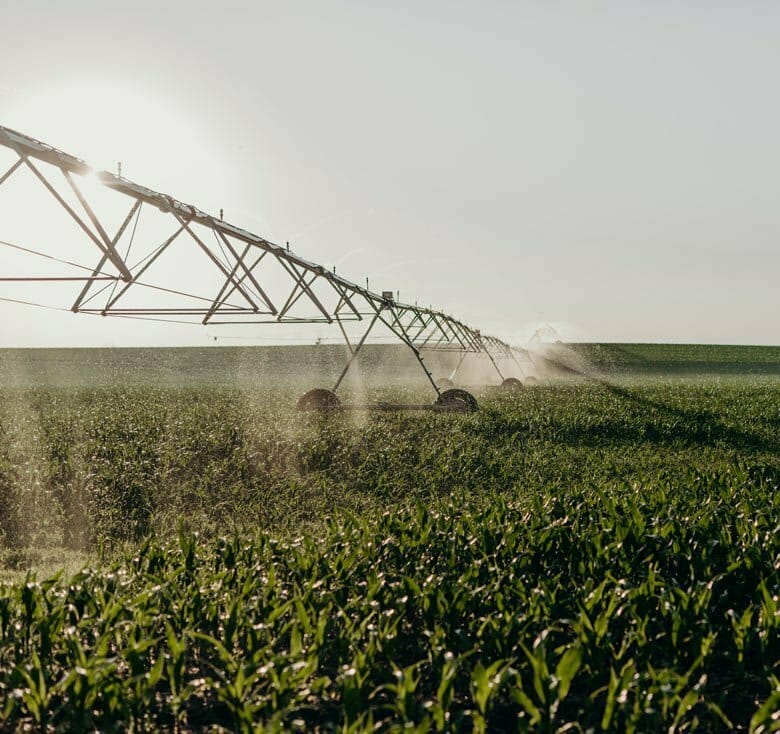
Submitting Research RFPs
The Nebraska Corn Board distributes an annual request for proposals (RFP) as a process to collect, review and ultimately decide on proposals to fund. Although we request that proposals be submitted for research during this process, the Nebraska Corn Board will review proposals through the year, should they be submitted outside of the annual RFP process and timeline.
Request for Proposal Informational Sessions
The Nebraska Corn Board Research funding program will release a request for proposals (RFP) on September 15 and is offering three, one-hour informational sessions for those interested in:
- Receive an overview of the grant process, including priority areas, timeline and how proposals are evaluated
- Propose research or program ideas to Nebraska Corn Board staff and growers to improve alignment of proposals with RFP priorities
- Ask general questions about the grant process that may assist you in proposal development
Informational sessions will be held at the following times. We ask that those interested in attending pre-register. Once registered, you will receive a Zoom link for your selected date. Please come prepared with your questions.
Explore Top Research Projects Current and Recent
Sustainable Manufacturing of High-Quality Carbon Fibers from Corn Kernel Fibers
Corn kernel fiber is a natural, renewable and low-cost material produced from the corn grain’s wet and dry mill processes prior to the ethanol production process. Currently, it is used as a low-grade animal feed ingredient, but it could have another use. Carbon fiber (CF), a synthetic material, makes them attractive for use in aerospace, automotive, medical industries and sporting equipment. Currently, most commercial CFs are manufactured from a petroleum-derived polymer. This project has developed a novel process of converting corn kernel fiber to high-quality carbon fiber. This project has successfully established a new technology for converting corn kernel fiber to high-value CFs, thus increasing the value and sustainability of Nebraska’s corn crop. This novel use will increase the potential value of corn kernel fiber.
Understanding Crown Rot Disease in Corn
Crown rot disease found in corn has been increasing for more than a decade, capturing the concern of producers and the industry. Often, the first indication of crown rot disease is the sudden discoloration and death of a few to large clusters of corn plants in the weeks leading up to harvest. Digging plants and splitting the lower stalks and crowns through the root ball often reveal obvious discoloration and decay that may also extend into roots. Unfortunately, the disease is not well understood, leaving basic questions about the causal pathogen(s) and factors influencing disease development unanswered. This project seeks to unravel the questions behind crown rot including identifying the species causing disease, other potential contributing factors and to identify the source of the pathogen(s) responsible.
UNL-Testing Ag Performance Solutions (TAPS)
The UNL Testing Ag Performance Solutions (TAPS) program was created to engage agricultural producers on input use efficiency and profitability through participation in farm management competitions. With tighter profit margins, increased social and regulatory pressures for sustainable crop production, agricultural production has become ever more challenging. The goals and mission of the TAPS program align closely with those of the Nebraska Corn Board (NCB), especially as we seek to identify sustainable and profitable management practices and solutions for corn production. A key benefit of the TAPS program is that it provides producers the opportunity to try new and emerging technologies and management strategies prior to purchasing and adopting on their own farm. This program provides a touchstone where people can observe and use new ideas, test conventional wisdom and discover better ways to do business in an environment of friendly competition.
Using Corn Starch and Corn Oil in Manufacture High-Capacity Lithium-Ion Batteries
Lithium-ion batteries have considerable potential for large-scale storage of renewable energy. Graphite is the anode material currently used in lithium-ion batteries and most importantly, graphite delivers an inferior capacity, critically limiting the energy density of lithium-ion batteries and their application in large-scale energy storage. High-capacity anode materials do exist, but they degrade too quickly leading to rapid battery failure. In the past decade, efforts have been made to conquer this obstacle. The goal of this program is to develop a low-cost and scalable approach to manufacturing high-capacity lithium-ion batteries using significant amounts of corn starch and corn oil in the process. It will make a long-term contribution to the sustainability of Nebraska's agricultural system by providing an environmentally sustainable, technically feasible and economically beneficial solution to the utilization of corn products.
Wood Carbon Subsoil Amendment for Sustainable Corn Production on Sandy Irrigated Soils
High groundwater nitrate is a serious problem in certain areas across Nebraska. The risk for nitrogen leaching below the root zone is greatest beneath intensively irrigated sandy, well-drained soils. Few, if any, cost-effective alternatives are available to producers for controlling nitrate losses in highly vulnerable, irrigated soils. This program will demonstrate the efficacy of subsoil wood carbon injection for improving groundwater quality in areas vulnerable to nitrate leaching by forming a subsoil bioreactor layer. Locally harvested and ground woodchips will be injected at or below the crop root zone using a modified subsoil plow outfitted with a variable-speed auger hopper. This subsoil bioreactor will improve water retention in sandy soils and provide carbon to microorganisms that will intercept nitrate lost below the root zone over many growing seasons. This management practice can be scaled up and will provide a beneficial use for waste wood products currently burned or buried on Nebraska farmland, with potential benefits for enhancing carbon sequestration, improving soil health through increased carbon content and increasing resilience to erratic weather conditions.

